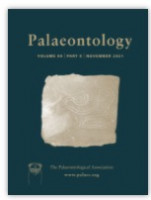Biodiversity today is uneven, with equally ancient sister groups containing few or many species. It has often been assumed that high biodiversity indicates fast evolution, and yet in a classic work in 1944 George Simpson suggested that fast evolution might generate instability and extinction, and that slow evolution led to high biodiversity. Here we show that evolutionary rates can vary substantially through the history of a clade and find evidence for Simpson’s claim. In a comparative phylogenetic study deploying Bayesian methods, we find that Squamata, comprising today over 10 000 species of lizards and snakes, showed slow rates of evolution in the first two-thirds of their history, whereas their sister clade, Rhynchocephalia, comprising just one living species, showed high rates of evolution in the past. Slow and steady won the race for the Mesozoic squamates, and the high-rate boom and bust existence of rhynchocephalians at that time leaves them with a single survivor. We need to explore other cases where fast evolution can lead to short-term high diversification, but in the end long-term low biodiversity. Open access in Palaeontology

